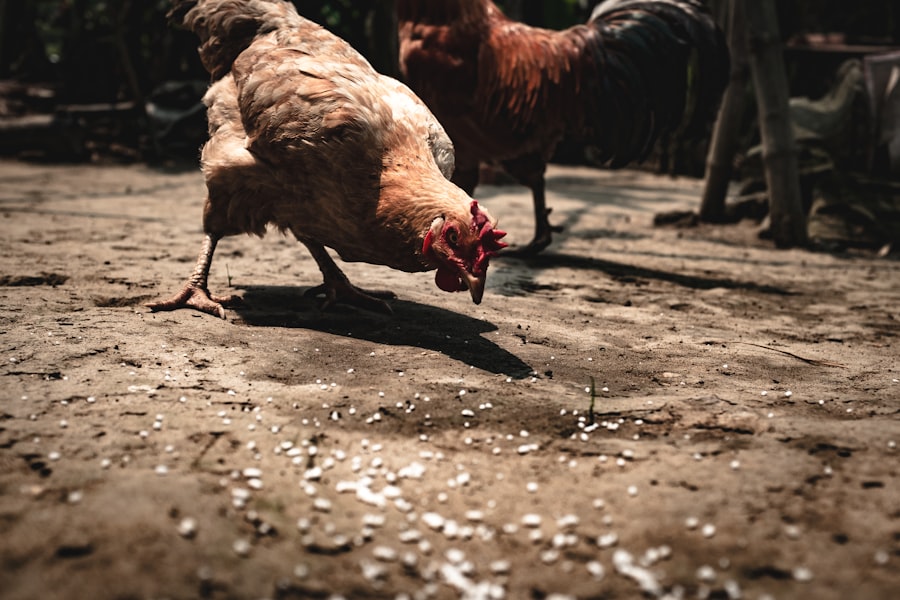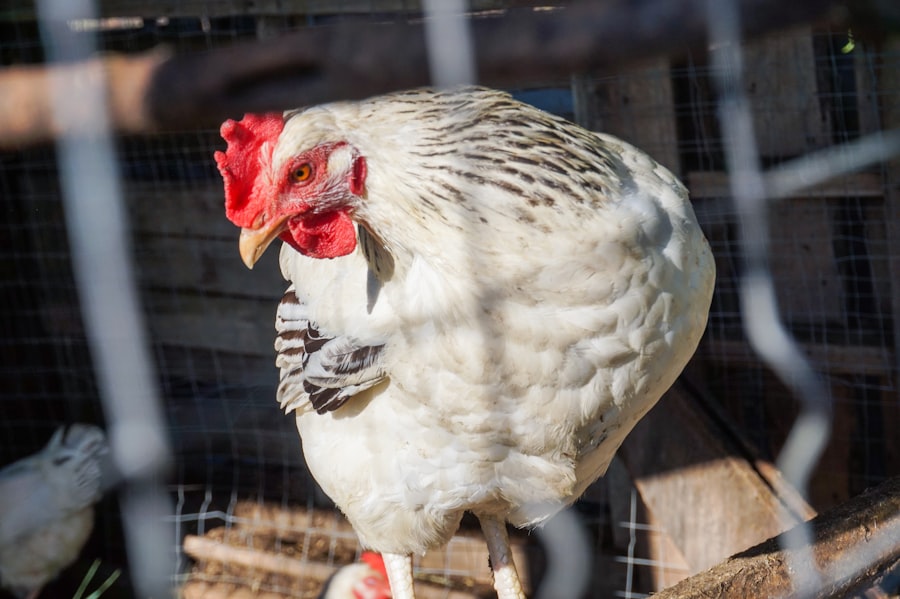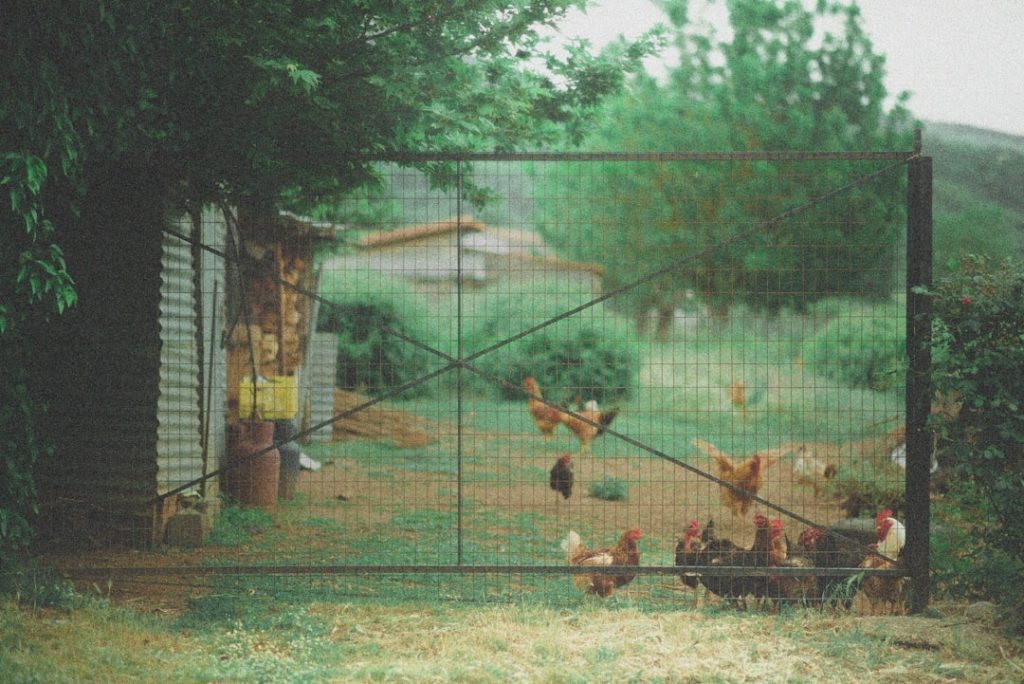Initial costs for setting up a backyard chicken coop include:
1. Coop construction or purchase: $200-$1000+
2. Equipment: feeders, waterers, nesting boxes, bedding materials
3.
Predator-proofing: fencing and other protective measures
4. Chickens: $2-$20+ per bird, depending on breed and age
Ongoing expenses to consider:
1. Feed: high-quality, balanced diet for optimal health and egg production
2.
Bedding materials: straw or wood shavings for coop maintenance
3. Potential increased costs for organic or non-GMO feed options
These initial and ongoing costs should be factored into the budget when planning a backyard chicken operation. The total expense can vary significantly based on flock size, coop design, and chosen feed quality.
Table of Contents
- 1 Monthly feed and bedding expenses
- 2 Coop and run maintenance
- 3 Veterinary care and medications
- 4 Egg production and consumption
- 5 Additional expenses for treats and supplements
- 6 Cost-saving tips for keeping backyard chickens
- 7 FAQs
- 7.1 What are the initial costs of keeping chickens in a small backyard?
- 7.2 What are the ongoing costs of keeping chickens in a small backyard?
- 7.3 Are there any other costs to consider when keeping chickens in a small backyard?
- 7.4 What are some ways to save money when keeping chickens in a small backyard?
Key Takeaways
- Initial setup costs can include purchasing a coop, feeders, waterers, and heat lamps, as well as fencing for a run area.
- Monthly feed and bedding expenses can vary depending on the number of chickens and the quality of feed and bedding chosen.
- Coop and run maintenance may include regular cleaning, repairs, and pest control to ensure a healthy living environment for the chickens.
- Veterinary care and medications may be necessary for routine check-ups, vaccinations, and treatment of illnesses or injuries.
- Egg production and consumption can help offset costs by providing a fresh and nutritious food source for the household.
- Additional expenses for treats and supplements can include items like mealworms, oyster shell, and probiotics to enhance the chickens’ diet.
- Cost-saving tips for keeping backyard chickens can include buying feed in bulk, using natural pest control methods, and sourcing free or low-cost materials for coop and run construction.
Monthly feed and bedding expenses
Monthly Expenses for Your Backyard Chicken Coop
Once your backyard chicken coop is up and running, you’ll need to budget for monthly feed and bedding expenses. The amount you’ll spend on feed will depend on the size of your flock, the quality of the feed, and whether or not you choose to supplement with kitchen scraps or treats. On average, a single chicken will eat about 1/4 to 1/3 pound of feed per day, so it’s easy to calculate how much you’ll need for your specific flock size.
Bedding Materials for a Clean and Dry Coop
Additionally, you’ll need to budget for bedding materials to keep the coop clean and dry. This can include straw, wood shavings, or other absorbent materials. The amount you’ll spend on bedding will depend on the size of your coop and how often you clean it out.
Supplements and Treats for Happy and Healthy Chickens
In addition to feed and bedding, you may also want to budget for other monthly expenses such as supplements or treats for your chickens. While these items aren’t strictly necessary, they can help keep your birds healthy and happy. For example, you may choose to provide oyster shell or grit to help with digestion, or you may want to offer mealworms or other treats as a special snack.
Factoring in Additional Expenses
These additional expenses can vary depending on your preferences and the needs of your flock, so it’s important to factor them into your monthly budget.
Coop and run maintenance

Maintaining a backyard chicken coop and run is an ongoing task that requires both time and money. Coop maintenance includes cleaning out the coop regularly, replacing bedding, and making any necessary repairs or upgrades. This can involve purchasing cleaning supplies, such as brushes and disinfectants, as well as replacement parts for things like roosts or nesting boxes.
Additionally, you may need to invest in predator-proofing measures such as hardware cloth or electric fencing to keep your birds safe from harm. Run maintenance is also important for keeping your chickens healthy and happy. This can involve mowing the grass, raking up droppings, and checking for any potential hazards or escape routes.
You may also need to invest in shade structures or shelters to protect your birds from the elements. Overall, coop and run maintenance is an ongoing expense that should be factored into your budget when considering the costs of keeping backyard chickens.
Veterinary care and medications
Just like any other pet, chickens require regular veterinary care to stay healthy. This can include annual check-ups, vaccinations, and treatment for common ailments such as parasites or respiratory infections. Additionally, you may need to budget for medications such as wormers or antibiotics if your birds become ill.
Veterinary care and medications can be a significant expense for backyard chicken keepers, especially if you have a larger flock or if you choose to use holistic or alternative treatments. It’s important to find a veterinarian who is knowledgeable about poultry care and who can provide guidance on preventative measures as well as treatment options. Some common vaccinations for chickens include Marek’s disease, Newcastle disease, and fowl pox.
These vaccinations can help protect your flock from serious illnesses and should be factored into your annual budget. Additionally, it’s a good idea to have a first aid kit on hand with basic supplies such as bandages, antiseptic ointment, and electrolytes in case of emergencies.
Egg production and consumption
One of the main benefits of keeping backyard chickens is the fresh eggs they provide. However, it’s important to consider the cost of egg production when budgeting for your flock. The amount of eggs your hens will lay can vary depending on factors such as breed, age, and diet.
On average, a healthy hen will lay about 250-300 eggs per year, although this can vary widely. When calculating the cost of egg production, it’s important to consider not only the cost of feed and bedding but also the initial setup costs and ongoing maintenance expenses. For example, if you spend $500 on setting up your coop and run, and another $50 per month on feed and bedding, you’ll need to factor these costs into the price of each egg your hens produce.
This can help you determine whether keeping backyard chickens is a cost-effective option for you.
Additional expenses for treats and supplements

Benefits of Treats and Supplements
In addition to their basic feed and bedding needs, chickens can benefit from extra treats and supplements. For instance, oyster shell or grit can aid digestion and egg production, while mealworms or other treats can be a fun way to bond with your birds.
Moderation is Key
While treats and supplements can be beneficial, it’s essential to give them in moderation. Overfeeding treats can lead to nutritional imbalances or obesity in chickens, so it’s crucial to use them sparingly. Some treats, such as avocado or chocolate, are toxic to chickens and should be avoided altogether.
Budgeting for Treats and Supplements
When budgeting for treats and supplements, it’s vital to consider both the cost and the nutritional value they provide. This ensures that you’re meeting your birds’ needs without overindulging them.
Cost-saving tips for keeping backyard chickens
While there are certainly costs associated with keeping backyard chickens, there are also ways to save money and make the experience more affordable. One cost-saving tip is to buy feed in bulk, which can often be purchased at a discount from local feed stores or co-ops. Another option is to grow your own chicken feed by planting a garden with crops such as corn, sunflowers, or greens that chickens enjoy.
Another way to save money is by using natural materials for bedding and coop maintenance whenever possible. For example, using leaves or grass clippings as bedding can be a cost-effective alternative to purchasing wood shavings or straw. Additionally, making repairs or upgrades yourself instead of hiring a professional can save money in the long run.
Finally, consider joining a local chicken-keeping group or online community where you can share resources and knowledge with other backyard chicken enthusiasts. This can be a great way to swap surplus eggs or produce with others in your area, as well as learn from their experiences and cost-saving tips. In conclusion, while there are certainly costs associated with keeping backyard chickens, it’s possible to make the experience affordable with careful planning and budgeting.
By considering initial setup costs, monthly expenses for feed and bedding, coop and run maintenance, veterinary care and medications, egg production and consumption, as well as additional expenses for treats and supplements, you can ensure that you’re providing for your flock’s needs without breaking the bank. Additionally, by implementing cost-saving tips such as buying feed in bulk, using natural materials for bedding and maintenance, and joining a local chicken-keeping community, you can make the experience of keeping backyard chickens both enjoyable and economical.
If you’re considering keeping chickens in your small backyard, you may also be interested in learning about the cost of keeping quail. Poultry Wizard has a helpful article on whether quails sit on their eggs, which can provide valuable insight into the expenses and responsibilities of raising these birds. Understanding the costs and care requirements of different poultry options can help you make an informed decision about which animals are best suited for your backyard setup.
FAQs
What are the initial costs of keeping chickens in a small backyard?
The initial costs of keeping chickens in a small backyard include purchasing a coop, feeders, waterers, bedding, and of course, the chickens themselves. The cost of a coop can range from $200 to $600, while feeders and waterers can cost around $20 to $50 each. The cost of chickens can vary, but typically range from $3 to $30 per bird.
What are the ongoing costs of keeping chickens in a small backyard?
The ongoing costs of keeping chickens in a small backyard include feed, bedding, and occasional veterinary care. The cost of chicken feed can vary, but on average, it can cost around $15 to $30 per month per chicken. Bedding, such as straw or wood shavings, can cost around $10 to $20 per month. Veterinary care costs can vary, but it’s important to budget for occasional check-ups and potential medical expenses.
Are there any other costs to consider when keeping chickens in a small backyard?
Other costs to consider when keeping chickens in a small backyard include predator-proofing the coop and run, as well as any additional equipment or supplies needed for the chickens’ well-being. Predator-proofing can involve the cost of hardware cloth, locks, and other security measures, which can range from $50 to $200 depending on the size of the coop and run. Additional equipment or supplies may include heat lamps, nesting boxes, or supplements, which can vary in cost depending on the specific needs of the chickens.
What are some ways to save money when keeping chickens in a small backyard?
Some ways to save money when keeping chickens in a small backyard include building your own coop, using DIY feeders and waterers, sourcing feed and bedding in bulk, and utilizing natural or homemade remedies for health and pest control. Building your own coop can save hundreds of dollars, and DIY feeders and waterers can be made from repurposed materials. Sourcing feed and bedding in bulk can also save money in the long run, and using natural or homemade remedies can reduce the need for expensive veterinary care or pest control products.
Meet Walter, the feathered-friend fanatic of Florida! Nestled in the sunshine state, Walter struts through life with his feathered companions, clucking his way to happiness. With a coop that’s fancier than a five-star hotel, he’s the Don Juan of the chicken world. When he’s not teaching his hens to do the cha-cha, you’ll find him in a heated debate with his prized rooster, Sir Clucks-a-Lot. Walter’s poultry passion is no yolk; he’s the sunny-side-up guy you never knew you needed in your flock of friends!







